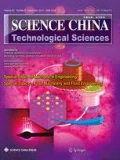Abstract
At present, the regular inspection of power poles is just a visual inspection based on the inspector’s experience. Thus, overlook of the deteriorated poles can come off. In order to avoid an accident due to the overlook of the deteriorated poles, the authors propose a simple and easy health monitoring method for power poles using ‘iPod’. Since the applicability of ‘iPod’ as a vibration sensor in this purpose was not clear, it was examined in the following procedure. First, the authors proposed a tool to fix the ‘iPod’ to a power pole, and the performance of ‘iPod’ as a vibration measurement device was compared with a conventional acceleration sensor. As a result, it was confirmed that ‘iPod’ could give almost the same response with the conventional sensor in terms of the observed predominant frequency. Next, vibration measurements were conducted at power poles in a field. As a result, the observed predominant frequency corresponded to the calculated 2nd natural frequency of power poles. Although some power poles were supported by some additional wires from the ground, the measurements were successful at almost all the sites. Hence, the authors confirmed that the ‘iPod’ based health monitoring is possible.
Similar content being viewed by others
References
Nishimura A, Tanamura S. A study on integrity assessment of rail way bridge foundation. RTRI report, 1989, 3: 41–49
Doebling S W, Farrar C R, Prime M B, et al. Damage identification and health monitoring of structural and mechanical systems from changes in their vibration characteristics. Los Alamos National Lab, 1996, 213: 1762–1770
Elmasry M I S, Johnson E A. Health monitoring of structures under ambient vibrations using semiactive devices. P Am Control Conf, 2004, 4: 3526–3531
Mori S. Design and its verification of a high R/C smokestack supported by long pile foundation. In: Proceedings of International Conference on Disaster and Development, Kathmandhu, 2008. 240–257
Mori, S. Development of technical report on seismic design examples based on ISO 23496. In: Proceedings of International Workshop on Design Examples Based on ISO-23496: Performance-based Design for Geotechnical Works, Tokyo 2010. 1–2
Lin T K, Kiremidjian A, Yang L C. A bio-inspired structural health monitoring system based on ambient vibration. Smart Mater Struct, 2010, 19: 115012
Ruiz E, Pando M. Use of ambient vibration measurements to infer dynamic properties of poorly characterized old earth dams-A case history from puerto rico. Adv Geotec Eng, 2011, doi: 10.1061/41165(397)188
Scott C, Heath G, Svoboda J. Vibration monitoring of power distribution poles. In: 2006 Symposium on the Application of Geophysics to Engineering and Environmental Problems, 2006
Kondo K. The Basics of Engineering Vibration Engineering (in Japanese). Tokyo: Baifukan Press, 1993. 278–281
ObjectGraph. iSeismometer, http://iphone.objectgraph.com/iseismometer/ (Accessed on 2013. 6.14)
Author information
Authors and Affiliations
Corresponding author
Rights and permissions
About this article
Cite this article
Orai, N., Ichii, K. & Ishii, S. A trial of simple and easy health monitoring for power poles by using ‘ipod’. Sci. China Technol. Sci. 58, 712–719 (2015). https://doi.org/10.1007/s11431-015-5782-7
Received:
Accepted:
Published:
Issue Date:
DOI: https://doi.org/10.1007/s11431-015-5782-7




